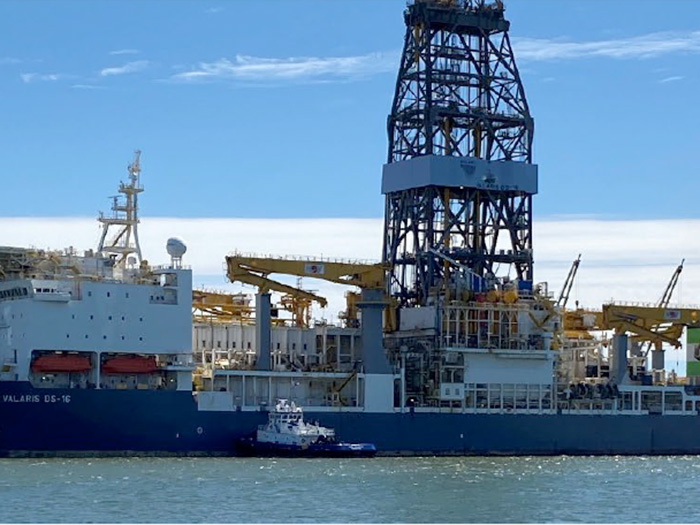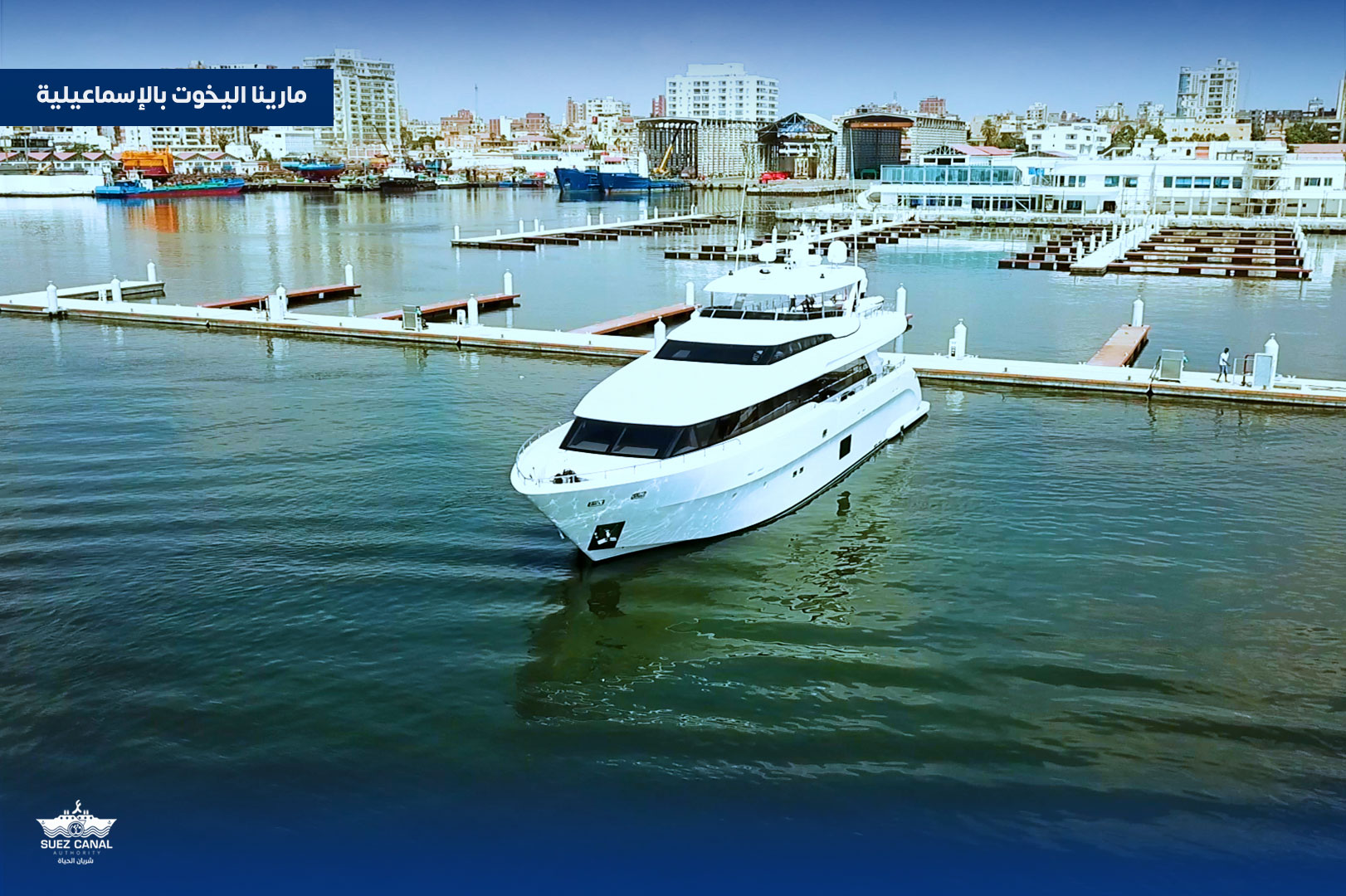A deteriorated bollard led to a 752 foot long drillship breaking away and colliding with a cargo vessel in Pascagoula, Miss., last year, according to the National Transportation Safety Board (NTSB).The breakaway resulted in nearly $5 million in damages.
On March 12, 2022, the mobile offshore drilling unit VALARIS DS-16, a 2015-built GustoMSC P10,000 drillship, was at the ST Engineering Halter Marine and Offshore Shipyard (STEHMO) when it broke away from the dock during the passage of a cold front, drifted across the Bayou Casotte channel and collided with the bulk cargo vessel Akti. No injuries or pollution were reported.
As a result of the collision, the VALARIS DS-16 sustained damage to the riser handling system, deck fittings, transfer hose-reel system, walkways and platforms, and other equipment on board. A bulwark panel was deformed on the starboard side, and insets on the side shell plating and port stern were also noted. Divers found no damage to the underwater portion of the hull during an underwater inspection. Damages were estimated at $4.2 million.
The Akti sustained damage to the starboard-side bridge wing, handrails, deck coaming, side shell plating, and lighting fixtures. Damages were estimated at $778,000.
STEHMO estimated the cost to replace bollard 6 at its facility at $20,000. The bollard was not recovered from the channel after it broke away. There were no reported damages to Chevron dock No. 6 where the Akti was moored.
At the time of the incident, the drillship’s mooring lines were placed on six bollards on the pier at the STEHMO Shipyard (since acquired by Bollinger Shipyards and now named Bollinger Mississippi Ship Repair). During strong winds of 30-40 knots, one of the bollards broke free at its base and was pulled off the pier into the water. The snapped bollard secured the VALARIS DS-16’s four bow lines and a semisubmersible rig’s two stern lines.
Ultrasonic thickness tests performed after the breakaway indicated there was deteriorated steel at the lower portion of several bollards. Several bollards also showed signs of external corrosion and wastage. In addition, all of the bollards used by the VALARIS DS-16 had been modified from the original 1997 design and vertical components added to each to accommodate more lines.
“Investigators found that although each of the bollards used by the VALARIS DS-16, including bollard 6, was stenciled with a ‘300T’ marking, likely to indicate they could safely sustain a working load of up to 300 tons, there were no records of any pull tests that could confirm this stenciled safe working load,” says the NTSB report. “Additionally, there were no records of any modifications to the bollards, nor tests, inspections, or maintenance conducted on the bollards, with the exception of a bollard pull test for a tugboat that resulted in a load of 154.5 metric tons (170.3 tons) applied to an unknown bollard in December 2020. Further, all the bollards used by the VALARIS DS-16 had been modified from the original 1997 design, and vertical components (for which there were no engineering records) were added to each of the bollards to accommodate more lines.
The bollard pipes’ overall height increased from just over 2 feet (26 inches) to anywhere from about 4 to 7 feet—about 2 to 5 feet higher than originally designed—with additional horns for mooring lines added well above the height of the horns on the original design. The additional horns allowed for mooring lines to be placed higher on bollards than planned for in the original design. As the height of a bollard (or its horns) increases, the horizontal or up-leading pull on the upper portion of the bollard significantly increases the moment of force applied to the base of the bollard.5 Therefore, bollard 6—and many of the other bollards used to secure the VALARIS DS-16’s mooring lines—were likely incapable of sustaining the working loads of their original design.”
The NTSB determined the probable cause of the drillship breakaway and subsequent collision with the cargo vessel was the failure of one of the shipyard’s mooring bollards—which had been modified to increase its height to accommodate more lines—used to secure the VALARIS DS-16’s bow mooring lines to a pier, during a cold front with strong winds.
The NTSB says the shipyard has replaced 10 of the 14 bollards on the pier, with plans to replace an eleventh bollard by the end of March 2023. Shipyard managers have begun evaluating the safe working load of the new bollards and are scheduling a pull test using a tugboat.
“As a result of continuing increases in vessel size and sail area, bollards that were previously sufficient may not have adequate capacity to moor larger vessels,” the report said. “There are currently no U.S. Coast Guard or Occupational Safety and Health Administration regulatory requirements for facilities to inspect and verify loading capacities of bollards at shoreside facilities. Bollards and associated pierside mooring equipment are vital equipment that must be capable of withstanding the tremendous forces that large vessels exert on them. Due to their exposure to seawater, bollards and associated pierside mooring equipment are at high risk for corrosion, which can significantly affect service life. The Coast Guard has recommended that facility owners and operators develop a routine inspection program for bollards and other mooring equipment.”
- Download the full report on the drillship breakaway HERE















